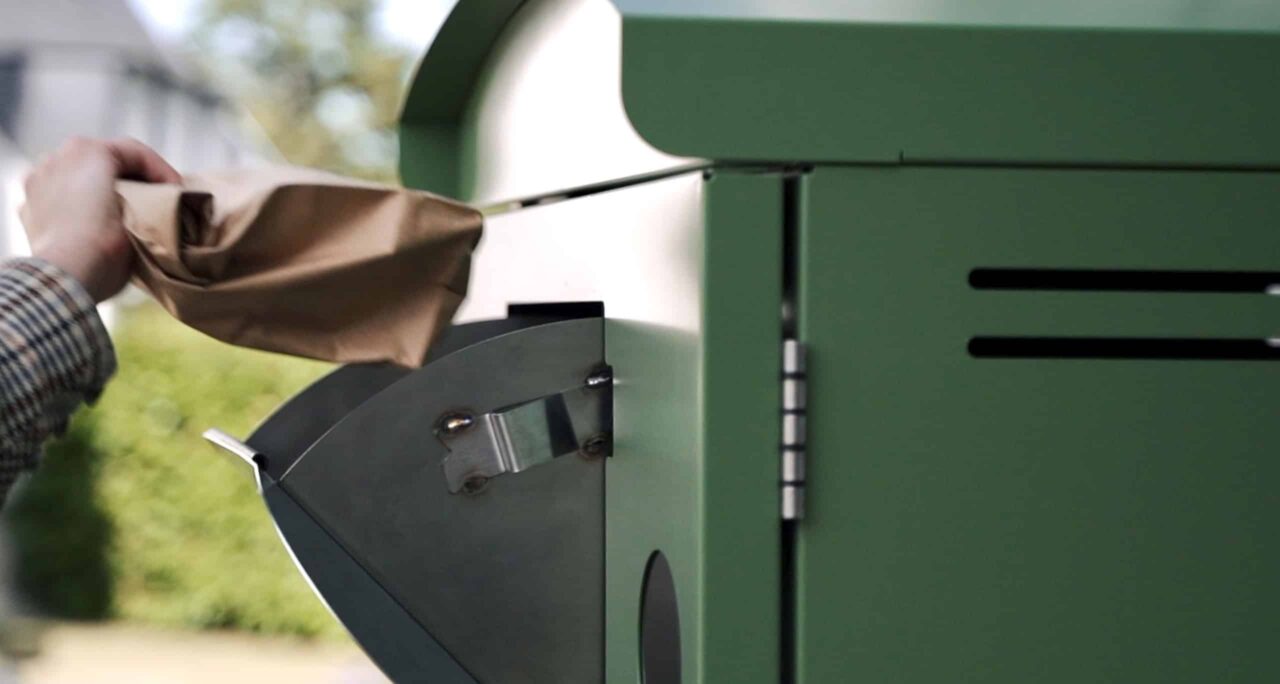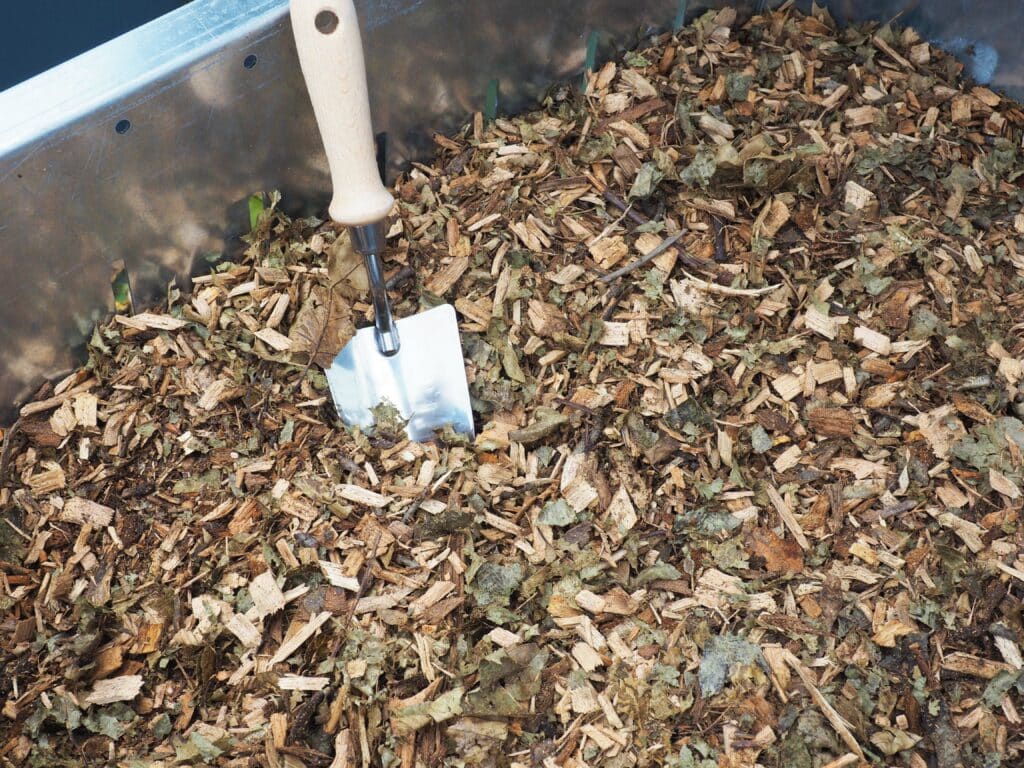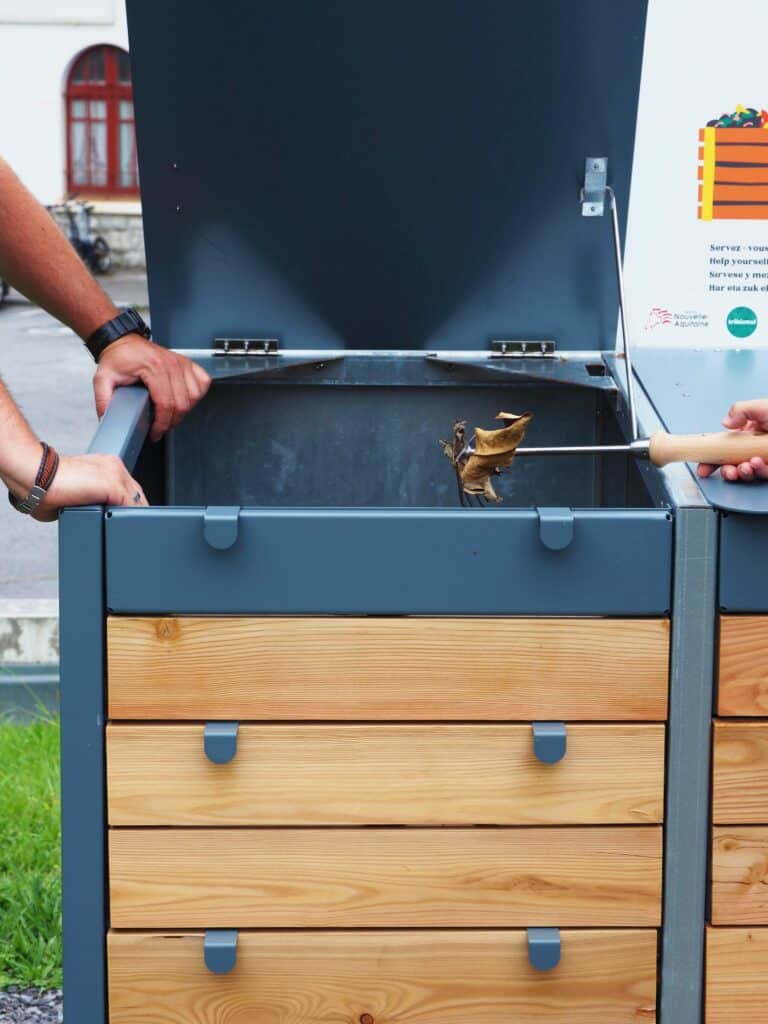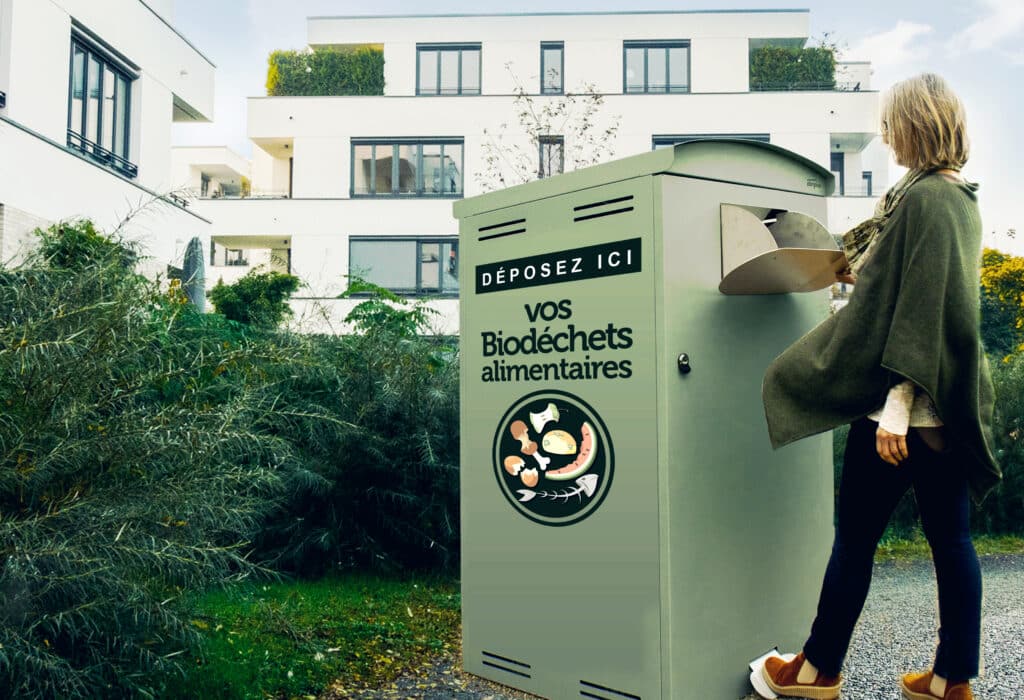Sorting biowaste 2024: Guide for professionals

For 18 million tonnes of biowaste (gross deposit estimated by ADEME), source separation and recovery will be mandatory from January 1, 2024. The obligation to sort biowaste had been compulsory since 2023 for all companies producing 5 tonnes/year. Today, all companies, whatever their production, are obliged to have a solution for sorting and recovering their biowaste. Faced with this new legislation, which is complex to grasp for many professionals, we’ll guide you from A to Z in implementing the new practices through this guide.
WHAT IS BIOWASTE?

Biowaste is defined as biodegradable, non-hazardous waste from gardens and parks, food and kitchen waste, whether generated by restaurants, caterers, stores, food production and processing facilities or private households.
More precisely, the bio-waste produced by professionals can correspond to :
- Biowaste packaged in compostable, methanizable and biodegradable packaging, provided it is unpackaged.
- Catering waste (DCT) disposed of in company canteens.
- Plant matter from the maintenance of green spaces.
- Unsold food products as found in the supermarket sector.
- Residues from the agri-food industry: depending on the type of activity concerned, this organic waste can be very diverse in nature.
- To this list of biowaste, we can also add coffee grounds and filters, as well as used tea bags, paper napkins and paper towels.
WHO ARE THE PROFESSIONALS CONCERNED?
As of January 1, 2024, all professional producers of biowaste are subject to the sorting obligation, regardless of their production volumes. The main professional producers of biowaste are as follows:
Green space managers: who produce residues from pruning and trimming trees, shrubs and hedges, mowing lawns and clearing brush, weeds from weeding, and so on.
Food processing industries: The biowaste to be sorted and recycled by food processing industries is foodstuffs that have not been sold/discarded, or that are past their sell-by date. These include frozen foods, pastries and bakery products, fruit and vegetables, and fresh self-service.
Good to know: raw meat residues, which result from meat and fish processing, must go through specific channels. They present particular health risks in terms of the spread of certain diseases.
Canteens/restaurants: For whom the biowaste to be sorted will concern leftovers from meals or preparations (bones, eggshells, fruit and vegetable peelings…) as well as food that has not been used and/or marketed, paper napkins and used edible oils. All plate leftovers are considered SPAN3 waste, as they contain meat or fish products. Up to 1 tonne of biowaste per week can be composted on site, as this is considered local composting. You are therefore exempt from having to apply for sanitary approval.
Markets: Organic waste from markets comes mainly from unsold food products.
The key point is that since January 2024, all professionals, regardless of their activity or the quantity of waste they produce, are concerned, as long as they produce bio-waste on a daily basis, such as in break rooms at lunchtime, with a collective restaurant, etc…
WHY SORT BIOWASTE AS A PROFESSIONAL?
The figures
- 30% of household waste is biowaste, an organic material essentially made up of water. When this bio-waste is not sorted and is sent out with the conventional household waste collection, it is most often landfilled or incinerated, generating greenhouse gas emissions that could be avoided with an on-site composting solution, for example.
- Nearly 3/4 of establishments that have implemented source separation of their bio-waste are satisfied with the practice(ADEME).
The benefits of sorting biowaste for businesses
- By recovering your bio-waste, you can reduce your indirect tax bill, as the bio-waste sector is exempt from the general tax on polluting activities (TGAP). What’s more, the TGAP will rise to €25/tonne for incinerated waste and €65/tonne for landfilled waste by 2025, to encourage companies to reduce the amount of waste they produce.
- By recovering your bio-waste on site, you can often reduce your waste management costs: no more collection by lorry, the costs of which tend to rise annually, and no more treatment and recovery costs outside your initial investment. Withthe Compost’up composter, you can easily calculate your return on investment, which will be 2 to 3 years.
- Highlighting your environmental responsibility and CSR approach.
- Cost control, regulatory compliance, team enhancement, corporate image, waste reduction and environmental protection
HOW TO SORT BIO-WASTE?
Regulations for companies
- As a producer of biowaste, you are obliged to reduce, sort and recycle your biowaste. (AGEC law)
- The collection and recovery of biowaste is subject to the standard regulatory requirements for waste tracking and traceability:
-Producer’s waste register,
-Consignment note,
-Prior declaration to the departmental prefect,
-Bordereau de suivi des déchets (BSD). - Failure to sort bio-waste is an offence punishable by a fine of €75,000 and 2 years’ imprisonment (application circular dated January 10, 2012: art. L. 541-21-1 of the Environment Code)
- In accordance with the “polluter pays” principle, all producers and holders of waste are responsible for its management through to recovery or disposal, including when treatment is carried out by a third party.
- From a sanitary point of view, the collection of biowaste requires systematic cleaning and disinfection of containers and collection vehicles, as well as collection at least once a week. If your facility does not collect biowaste on a daily basis, you’ll need to store it in a dedicated cold room after sorting.
- When waste production cannot be avoided (prevention), treatment must give priority in order to: reuse, recycling and material recovery, other recovery (energy). Disposal (storage) is a last resort.
What method should you choose for sorting biowaste?
By 2024, there will be two main ways of sorting and recycling biowaste: composting and separate collection. BioCollect and BioCompost serve two different, complementary purposes. The choice will depend on the location available (availability of green spaces, urban environment…), costs (size of company, quantity of biowaste produced…) and management of these spaces (specific intervention, time required for sorting, cleaning…).
At Abriplus, we develop waste sorting solutions, including bio-waste, as well as local composting solutions: collective composters and professional mechanical rotating composters.

Collective composting: Shared composting is local management, economical and virtuous! Ideal for establishments with gardens or parks nearby, collective composters are highly appreciated by catering professionals.
The BioCompost solution: TheBioCompost collective composting shelter has been eco-designed to meet all the criteria for successful composting. With its different bins, rodent protection, sturdiness and secure access, this shared composter makes sorting easy! Available in a range of sizes to suit different needs, thecomposter shelter is ideal for restaurants and canteens, where peelings and food scraps can be deposited.
Thanks to Compost’Up, professionals producing 15 to 30 kg of biowaste per day can benefit from the advantages of local composting, without any nuisance and in compliance with their requirements in terms of hygiene and easy management on their site. What’s more, this composter facilitates mixing and optimizes material degradation, making it compatible with all types of biowaste, including dishes with sauces, meat and fish, thus avoiding over-sorting of biowaste.
The three golden rules for quality collective composting:
– Aerate compost by stirring,
– Balance inputs by adding structuring agents (e.g. green waste shreds or wood chips, avoiding hard-to-degrade species such as conifers) to achieve a balance of around 1/3 structuring agents to 2/3 food waste,
– Maintain appropriate humidity levels.
Operating costs: According to anADEME estimate, the overall observed cost of in-facility composting is €1,790/year on average for in-bin composting. On a per-tonne basis, in-vessel composting costs differ according to production thresholds: – Small producers (< 5t/year): €600/tonne – Intermediate producers (between 5 and 10 t/year): €390/tonne.

Voluntary biowaste bins: Better suited to dense, urbanized areas, voluntary biowaste bins can handle large volumes of food waste. This solution enables residents to deposit their biowaste in bins provided by their local authority, which is particularly useful in dense urban areas with vertical housing.
The BioCollect solution: The BioCollect pre-collection bin has been designed to be as easy to use as possible. It features a pedal for hands-free opening, anti-odour perforations and is accessible to people with reduced mobility.
Good to know:
- Weekly collection is recommended.
- Use is limited to a local scale. (intercommunality and neighboring communes).
Operating costs : According to anADEME estimate, the average operating costs observed are €10,170/year, including €5,180/year in internal costs (human resources required for sorting and managing collection containers) and €4,990/year in external costs (food waste collection and processing services invoiced by the operator, and bin rental and cleaning services where applicable).
Setting the scene (example)
You’re an SME. You have a break room and some green spaces on your site. You are therefore concerned by theobligation to sort biowaste for meal leftovers and lawn/garden clippings. In this case, BioCompost may be the solution for you, as you have a small production of bio-waste and green spaces, so the fertilizer will be useful and the costs will be lower.
Sorting biowaste represents an opportunity for professionals to actively contribute to a circular and sustainable economy, and to help protect the environment. If you need help organizing your biowaste sorting, and finally complying with the law in force since January 2024, you can enlist the support of an Abriplus expert, who will guide you towards the solution best suited to your needs.
Share this article